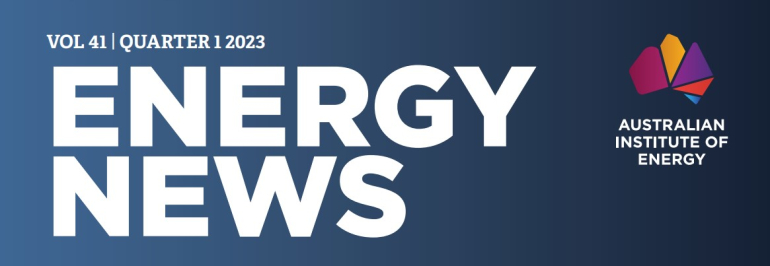Latest news
Read the latest news from the Centre for Sustainable Materials Research and Technology

The Australian Institute of Energy has interviewed Prof Veena for its EnergyNews magazine about recovering critical materials from waste to drive Australia’s energy transition.
See the print version of the story
Excerpt:
EnergyNews spoke with Professor Veena Sahajwalla about recovering critical materials from waste to drive Australia’s energy transition.
EN: As we navigate the clean energy transition, many of the critical materials we need can be recovered from waste. How can we shift our thinking to take advantage of this opportunity?
VS: The transition to clean energy means we also need clean materials. Metals are highly recyclable, and we should think of recycling as a forethought, not an afterthought. We should challenge ourselves with the notion that we can be very mindful and respectful of our environment and people’s need for materials and products which will benefit our whole society. We also need to empower local communities to see supply chains which source materials from waste. If communities recognise supply chains that tap into waste resources, we will stop seeing waste as a problem to be managed, and start seeing it as a solution to access the materials we need for our energy transition. This will lead us to an exciting new age of sustainable materials.
EN: Can you describe some of the other challenges and opportunities we may face as we navigate the energy transition over the coming decade?
VS: The main challenge will be the increasing demand for metals like copper, cobalt and lithium. If we are going to have energy storage solutions and rely on greater electrification on a global scale, we are going to have to look at how to access these high quality materials. This will include primary materials sourced from mining. For example, Australia has a lot of work going on around lithium mining. In addition, there will be opportunities to access these materials from recycling materials such as batteries. Once Australia starts harvesting recycled materials for the energy transition, we can take an important leadership role on the global stage. This will involve conversations not just about the science, technology and manufacturing, but issues related to ethical production of materials.
EN: What role will the circular economy and green manufacturing play in the recycling of valuable materials from waste?
VS: Burying or exporting waste is a lost opportunity. We need to recognise that there are different pathways to innovation and economic growth. This will involve establishing a holistic system that does not decouple waste and end-of-life goods from manufacturing. As we transition to clean energy and decarbonise our economy, we also need to build our expertise in green manufacturing. Bringing together energy, materials and products in a holistic system will be extremely important for Australia.
EN: What opportunities are there to recover critical minerals from long-lifespan materials such as solar panels?
VS: End-of-life solar panels contain many valuable materials. We are already seeing damaged or end-of-life solar panels come offline. We shouldn’t be waiting for a crisis to happen, we should plan for the fantastic opportunity to build an economy around this waste, and recover materials such as silicon, glass, aluminium and polymers.
But recycling a solar panel is very different to recycling a plastic bottle. We can’t ‘unmake’ complex multi-layered materials using a centralised factory that crushes or shreds solar panels and results in contamination. That doesn’t recognise that there are important materials that need to be harvested. We need to be clever, and plan upfront to align recycling and remanufacturing with the solutions and pathways we want.
For example, the SMaRT Centre has developed microrecycling technologies to recover a range of materials from complex composite waste such as printed circuit boards and lithium ion batteries using high temperature treatments. This is achieved through a series of modules in small-scale microfactories.
Microrecycling preserves the quality of component materials in a way that traditional recycling methods cannot, and provides opportunities and jobs for local communities.
EN: Should we prepare for end-of-life recycling and remanufacturing during the design process?
VS: If we are already thinking of the unmaking and remaking journey on day one, we can eliminate materials that will be problematic. For example, elements such as cadmium in a nickel-cadmium battery will be problematic during the unmaking process. We should be thinking about sustainability and safety for the whole product lifecycle right from the get-go every time we design a product. If we are going to design humancentric products and technology, we need to put humans at the heart of every solution.
EN: How important is collaboration in the effort to recover valuable materials?
VS: Materials recovery is not just about metals, but also plastic and glass. We need to design new ways of doing things at a local level. To do this, we must explore how the private sector, research and government can work together to take advantage of collective opportunities. For example, the SMaRT Centre is working with Shoalhaven City Council to build a microfactory to remanufacture glass, sand and textiles into ceramic tiles and kitchen benchtops.
EN: What changes does the energy industry need to make to move towards more sustainable materials?
VS: We can’t just assume that established processes will take into account the challenges we will face in the new era of sustainable materials. We need to consider what will it take to manufacture systems and deal with the whole of lifecycle including end of life. Taking holistic ownership will be crucial. I’d love to see conversations between the energy and recycling industries. This will be extremely important to accessing high quality materials that we can put back into production.